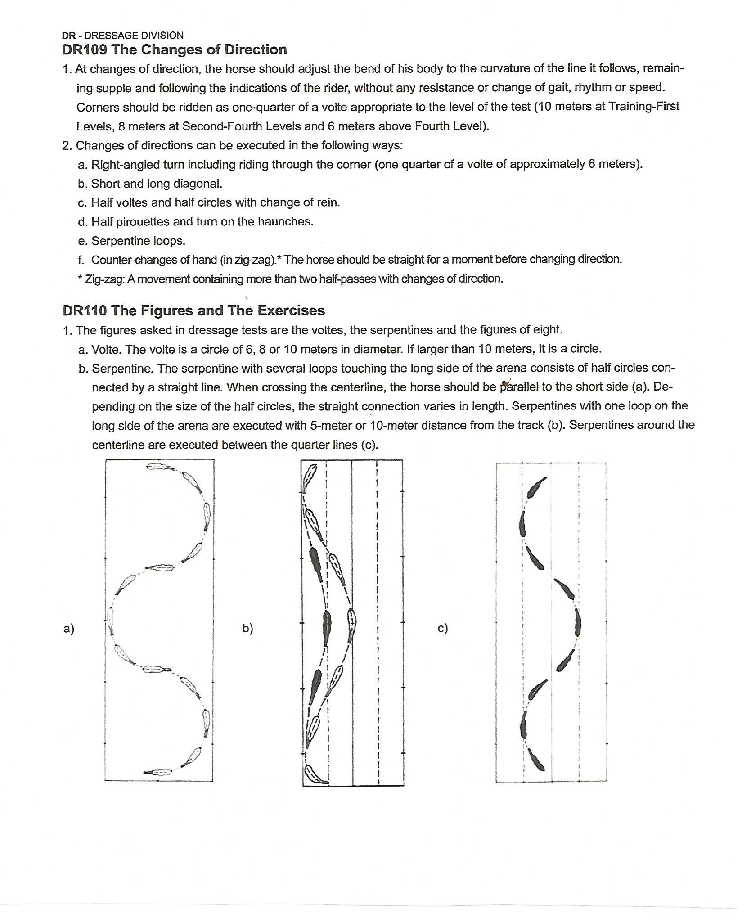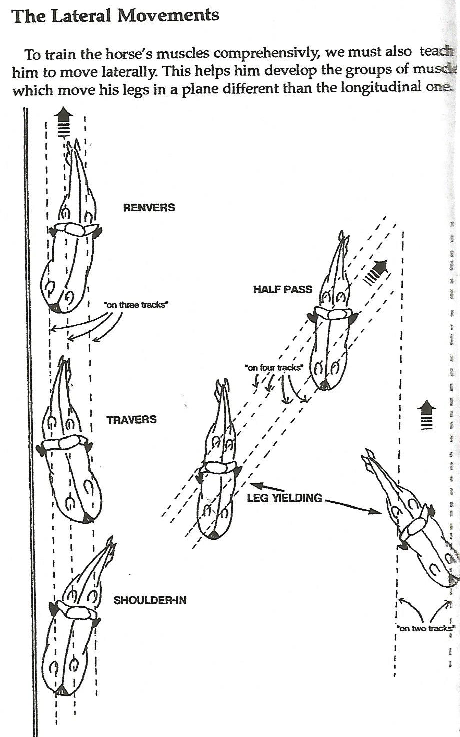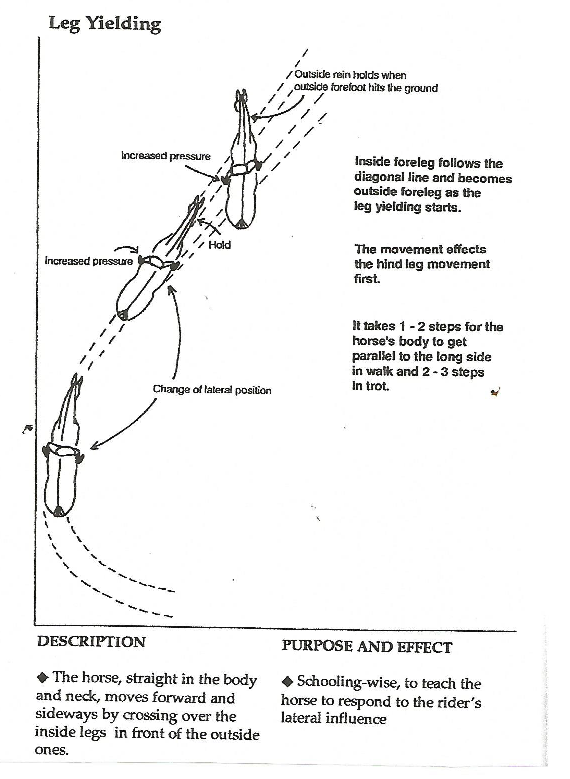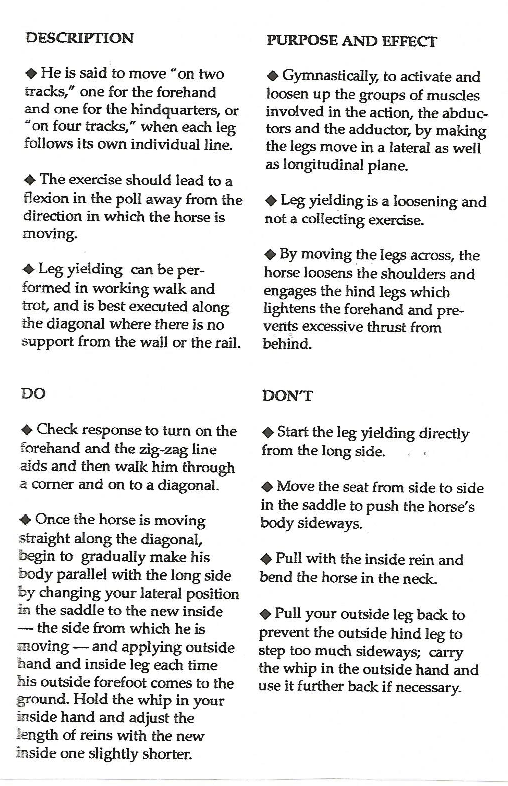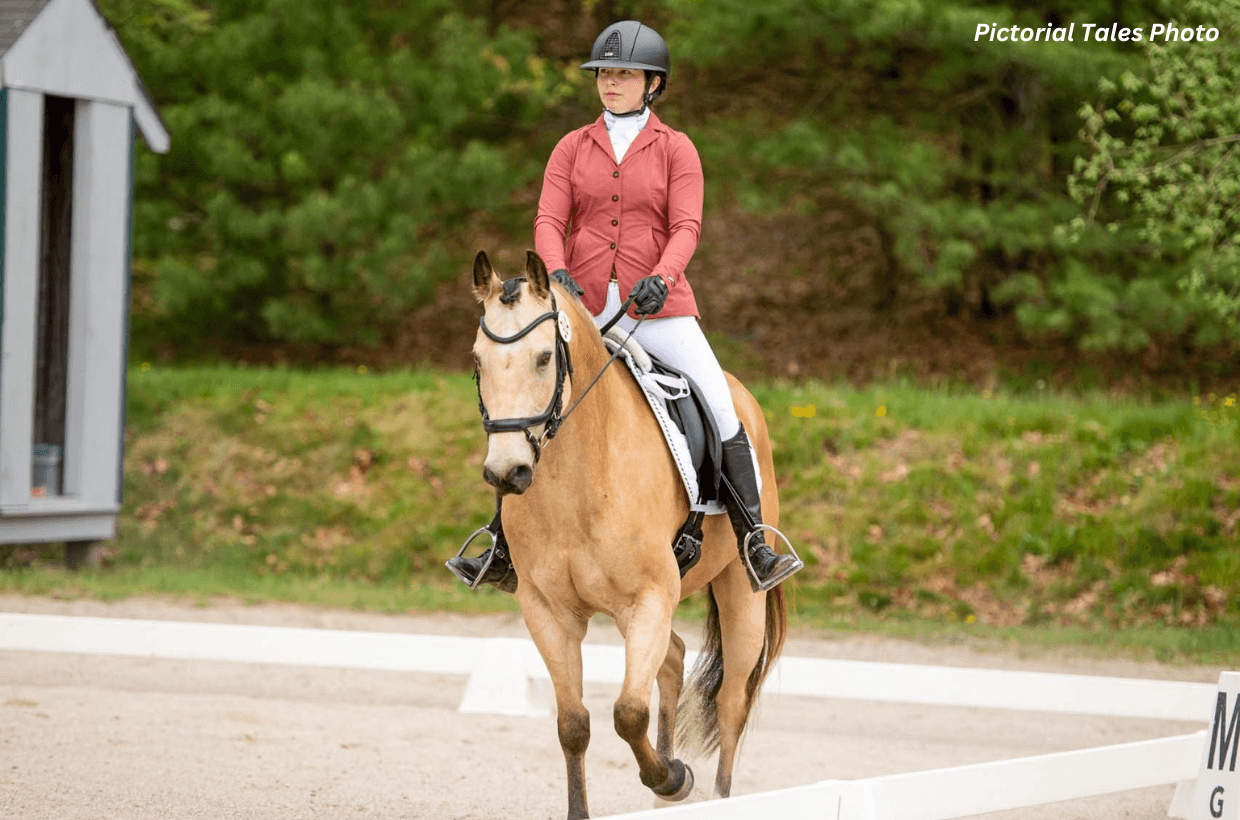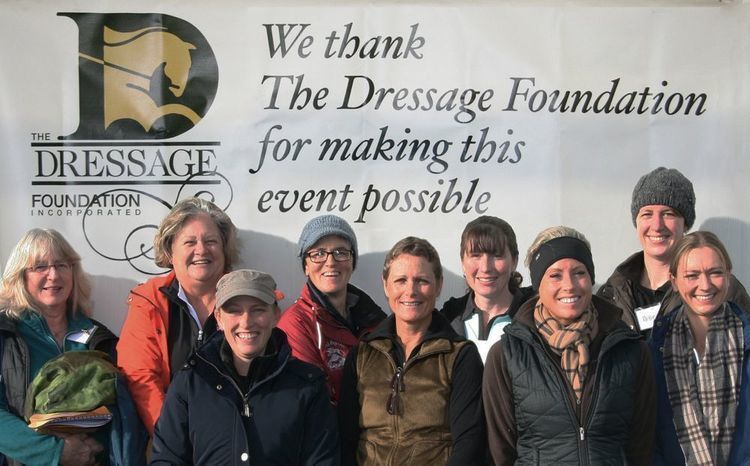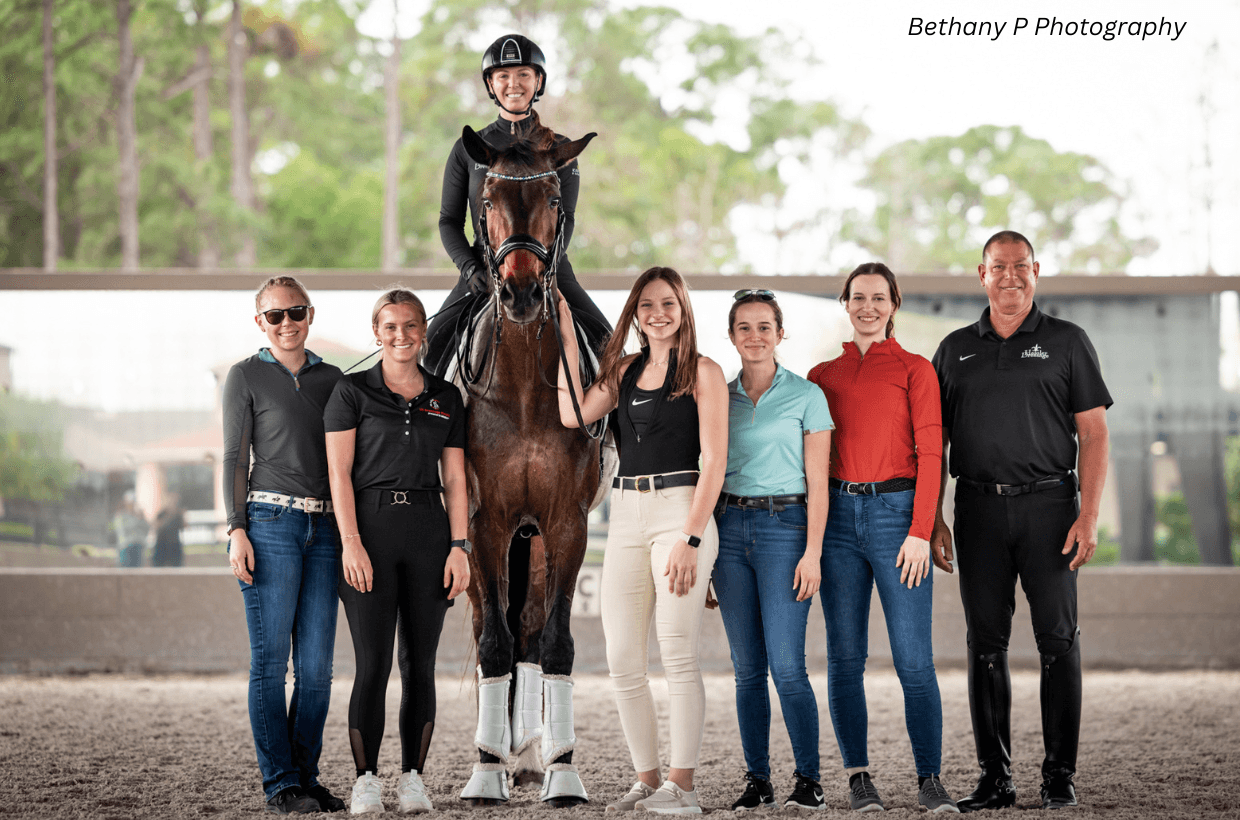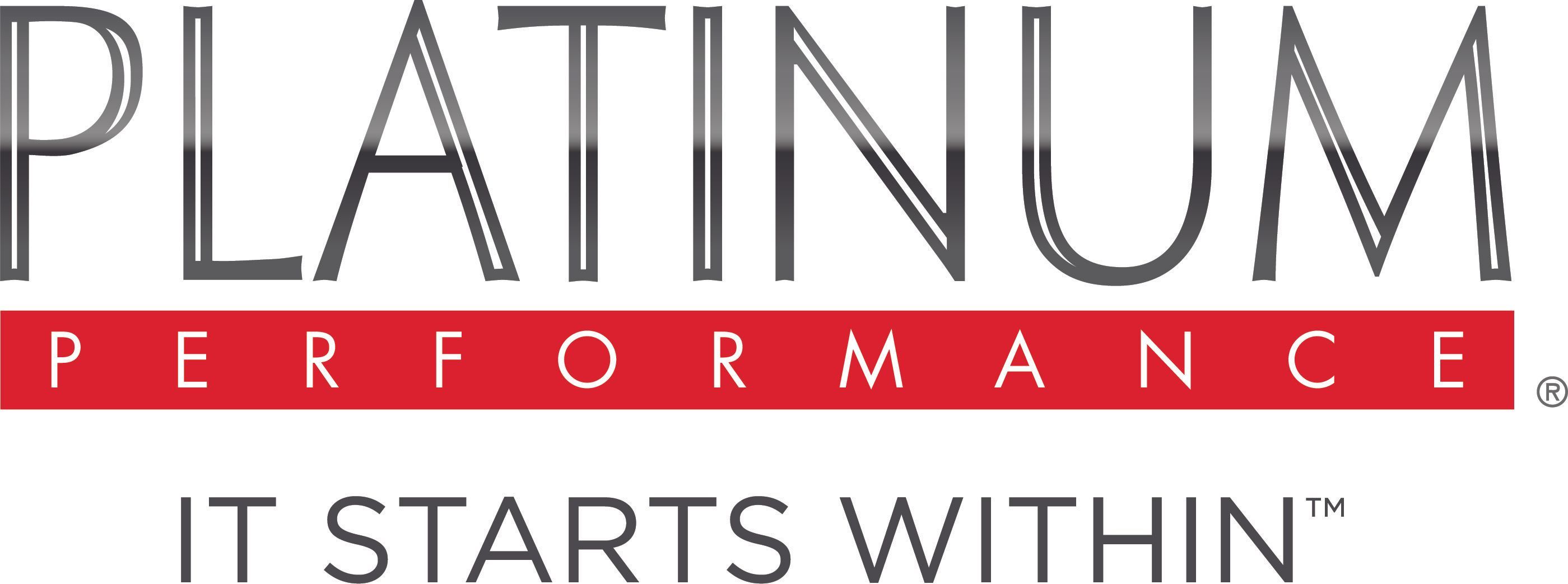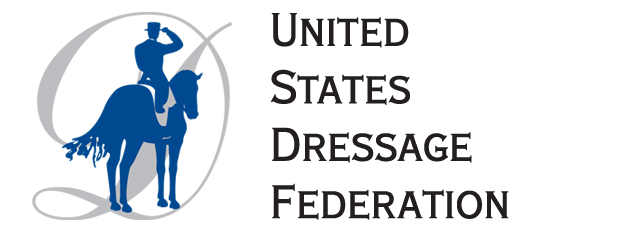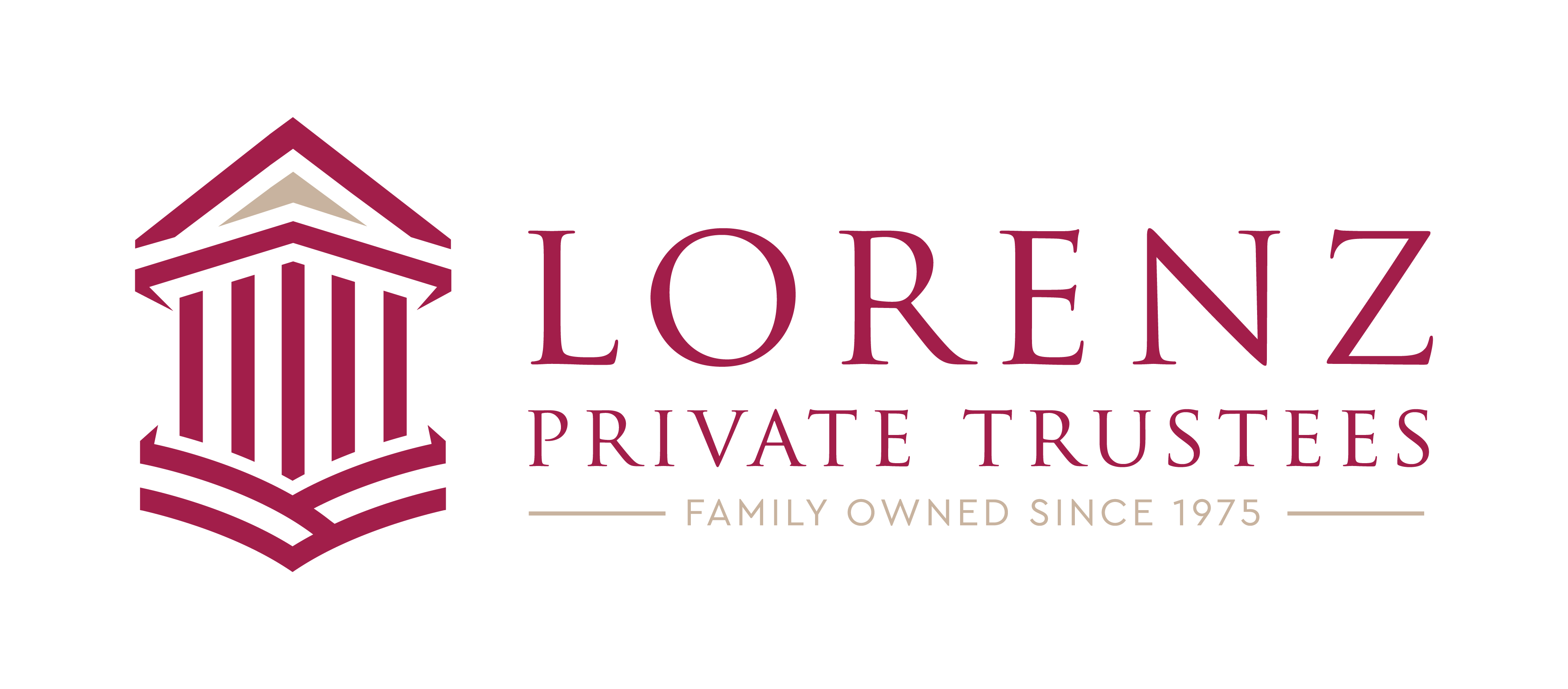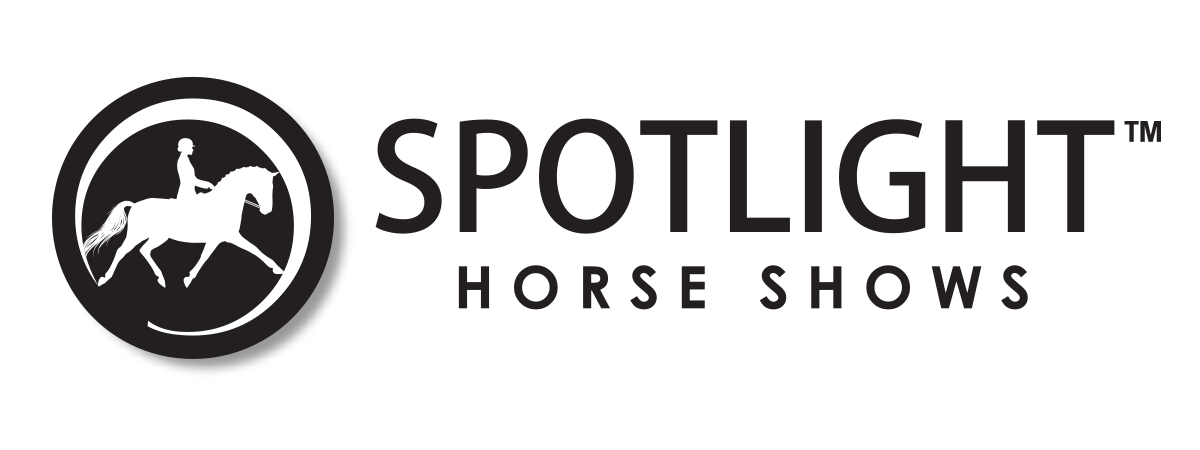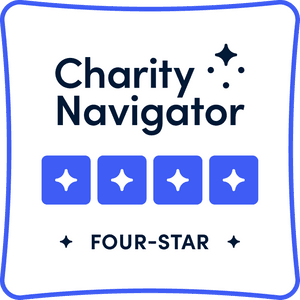Renate Lansburgh: "School Figures: Their Meaning, Purpose and Use"
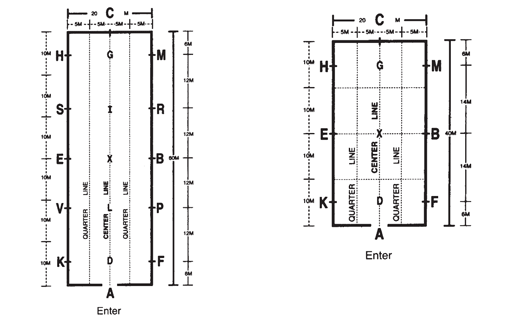
In dressage, school figures mean straight and curved lines organized in the standard (20x60m) arenas. School figures are definite in shape and form. They provide the rider with the means for progressive, systematic, gymnastic training to improve the suppleness of the horse. The AHSA Rule Book interprets ‘suppleness’ as follows: “Suppleness is the physical ability of the horse to shift the point of equilibrium smoothly forward and back as well as laterally without resistance. Suppleness is manifested by the horse’s fluid response to the rider’s restraining and positioning aids of the reins and the driving aids of the leg and seat. Suppleness is best judged in transitions.” In other words, the horse’s body is free of tension and lets the aids come through! The German word for suppleness is Durchlassignkeit, literally translated, ‘let-throughness,’ which is very descriptive indeed.
Suppleness therefore contains all other principal criteria which fulfill the requirements for the horse on the aids. These are:
1. Relaxation
2. Rhythm
3. Contact
4. Impulsion
5. Straightness
Straightness includes lateral position at the poll and jaw, which facilitates flexion through these joints and the hock; thus flexibility and bending through the ribs are possible.
The five basic requirements mentioned above are developed through considerate progressive training using school figures as well as transitions from gait to gait and within gaits. Once the horse has been strengthened physically to calmly carry himself under the rider in good balance, collection enters the training program as point six, the last of the principal requirements for the training of the horse. Through collection, the horse develops its fullest potential of self carriage. Since suppleness is the purpose and goal of school figures, we must use these required principles as guideposts throughout our work.
Points 1 through 5 are considered in that order on a daily basis during warm-up. They also provide the guideline in the progressive training of the young horse. Every dressage rider is familiar with the many exercises known as school figures, as she or he uses them in daily training. Though perhaps less known in this country as a term, it represents a basic concept in Europe, particularly Germany, as a successful method both for training the horse under the experienced rider, and the beginning rider on a schooled horse. As such, the term “school figures” is self-explanatory as well as comprehensive.
The novice rider is introduced to the riding school of school figures once s/he has obtained basic balance in the three gaits during a few months on the lunge. Then a schooled horse will help the development of balance and application of aids further while being ridden on simple lines reminiscent of a training level test…which are school figures! If a schooled horse is not available (which, of course, is the ideal, as it helps the development of the rider very much along), seek the most qualified instruction so that both novice horse and rider can receive help and correction as needed (an investment you will not regret).
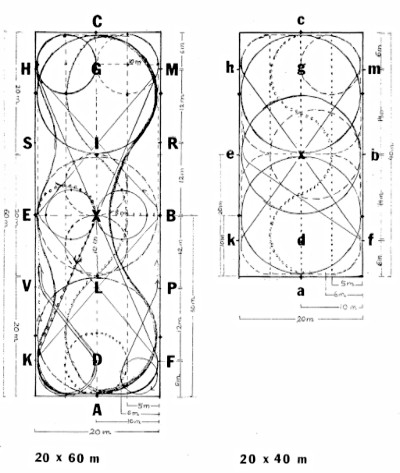
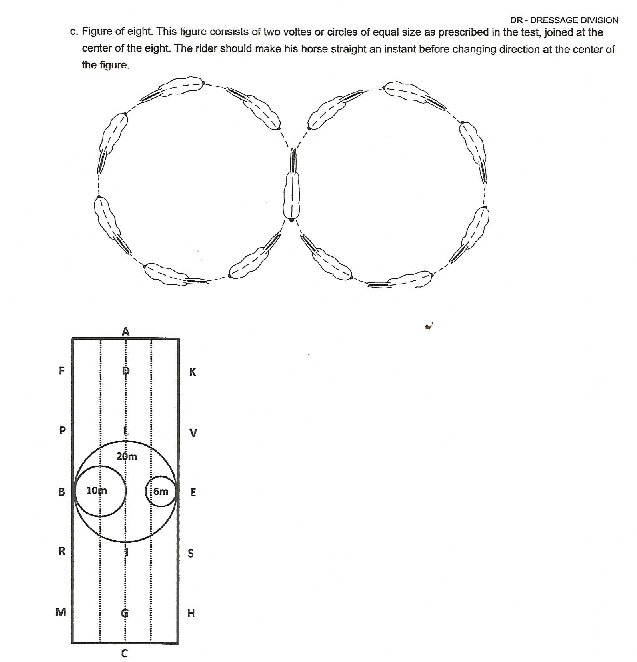
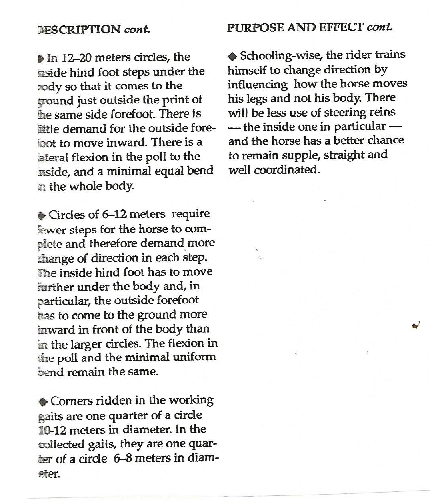
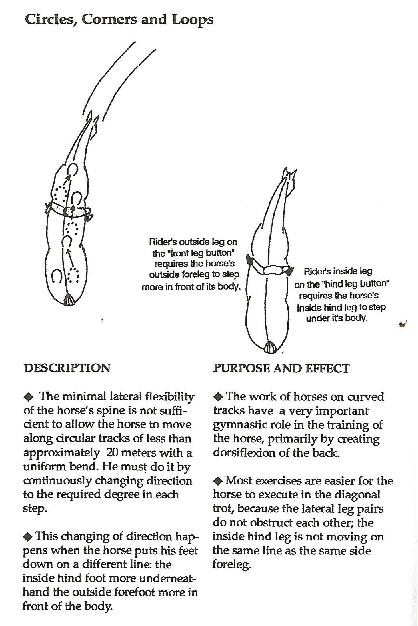
It must be fully understood that the practice of school figures for the purpose of training the horse requires a rider who has achieved a secure, balanced seat and position, can ride a horse onto the bit, apply clear and effective aids, and master the half-halt in order to prepare as well as balance the horse. She or he must know the layout of the arena, including visible and invisible points, letters and lines.
These lines were developed over centuries considering the stage of training of an average-sized horse. Points of reference were established in form of letters and circle points (or circle markers). For example: three circle points are located at the points where a 20 meter circle located at A or C touches the track of the arena, while the fourth touches the centerline. The concept of circle points greatly assists correct execution of any circle.
The practice of school figures is only effective if ridden correctly on their established curved and straight lines. These consist of circles of various sizes through all levels, half circles, serpentines, changes through the circle, changes out of the circle, and the figure eight, which is a very good suppling exercise, particularly when ridden in 10 meter circles.
The single and double loop, or “broken line” along the long side or over the centerline demand frequent changes of position and bend. They usually precede the schooling on a serpentine (loops in the width of the arena, while broken lines are very shallow curves), but in my opinion, they are not necessarily easier to ride, as they need good coordination of aids, quick, smooth changes of position and bend and very good control of the outside of the horse to balance him from one direction into the next.
Every corner of the arena constitutes a quarter circle. If ridden as such, it becomes a schooling figure of great importance which demands precise aids to position, bend, balance and straighten the horse. The depth of a corner has to correspond with the horse’s stage of training. Consider this to avoid possible loss of balance, tempo and rhythm by allowing the horse to drift either in or out of it.
Straight lines alternate frequently with circular work to check impulsion into even contact, regular rhythm, straightness and balance. Straight lines consist of; centerline, quarter lines, long (across the whole arena) and short (across half the arena) diagonals, the turns and changes across the school (lines parallel to short sides), and, of course, the lines of the long and short sides of the arena.
It is important to have a clear concept of the purpose of each school figure. All lines in the dressage arena with their exact measurements and shape have in themselves a training effect, if ridden correctly. They can therefore truly be called “school figures,” as the gymnastic results will be evident.
All school figures can be ridden in walk, trot and canter; some of them provide the lines for exercises on two tracks. Besides improved flexibility and balance, the gymnastic training expected of all curved lines is the strengthening of the inside hind leg, which due to the lateral bend throughout the horse’s body, has a shorter distance to travel and consequently needs to bend and carry more weight than the outside hind leg. To make this possible, the rider must use seat, weight, leg and rein aids harmoniously in their correct places in order to achieve an even bend from rear to front throughout the horse’s body. The whole spine, from tail to poll, is over the line traveled on. It is important that the outside leg is put well behind the girth early enough to help bend the horse around the inside driving leg positioned near the girth. The outside leg and rein are supportive, balancing aids important in all bending work.
There are three degrees of bending. Circles and curved lines of 20 meters in diameter develop a horse’s body in the first degree bend, which is quite shallow, but still demand enough for the green horse to make an effort and build strength in the hindquarters and back. The demand is gradually increased until we reach the second degree bending on a 10 and 8 meter circles and their derivatives. Second degree bending requires increased bend and carrying ability of the hindquarters and therefore collection. This culminates in the “volte” of 6 meters, which manifests third degree bending and even more collection. A ridden horse cannot bend beyond this degree. “Bend” refers to the lateral bend throughout the horse, as well as the bending of the hind legs, resulting in the lowering of the hindquarters. It is very important not to demand a greater degree of bending from a horse than his stage of training and the consequent development of carrying power of his hindquarters permit.
At all levels of training each school figure strives towards improvement of:
1. Obedience to both legs in their respective places.
2. Even acceptance of both hands, in all their effects of positioning, yielding, limiting and holding.
3. Impulsion: Even thrust, and later on, even carriage of both hind legs. Maintenance of tempo and rhythm.
4. Straightness on straight and curved lines. The hind legs must follow the corresponding front legs on all lines (horse’s spine over line of travel) to achieve and maintain straightness. Without it, there is no development of impulsion, nor will the horse be on the bit.
5. Even acceptance of position and bend in both directions.
6. Even use and suppleness of shoulders.
7. Stability at withers and base of neck to let the movement come through without falling out laterally at the shoulder.
8. A relaxed and swinging back that permits suppleness – “throughness”
9. Improved carrying power of the hind legs.
10. Improved balance.
The geometric definition of school figures and points of the school enforce precise riding and produce a more obedient horse. They enable the rider to think and feel ahead, permitting timely preparation through correct application of the aids, thus balancing the horse into the required movement/exercise.
School figures help in the design of a freestyle, pas de deux, quadrille and drill; since dressage tests are comprised of combinations of school figures they most positively improve a test.
In order to achieve any desired training effect from the use of a single school figure or a combination thereof the rider needs experience, skill and imagination. To be successful, the rider must be totally clear about cause and effect of the training exercises (school figures). Cause and effect are quite complex and can easily be confused with one another. At the same time, they can accomplish several things together.
For example:
• Curved lines in effect, improve agility and flexibility as well as strengthen and gymnasticize each inside hind leg (flexing in all joints) as it steps more under the center of gravity, caused by the shorter distance of the inside stride due to longitudinal bending of the body. Consequently, to become effective training, the correct bend has to be carefully prepared and executed in order to indeed cause a shorter, more carrying stride with inside hind actually flexing in all joints to fulfill the demand.
• The effect of transitions improves overall suppleness and thereby improves attentiveness, response and balance caused by increased bend in the hindquarters, carrying in down transitions alternating with increased thrust in upward transitions.
Never approach training with only its effect in mind. Nothing is done for its own sake, but aims towards correct gymnastic training of the horse based on absolute and established classical principles.
Ride your horse with conscientious consideration of the interrelation of cause and effect while using the established school figures in your daily work. Your performance will be proof of successful timing.
ABOUT RENATE:
Renate was a native of Germany and brought the German standards of dressage to our infant dressage community in the United States. She served on the USDF councils for judges and instructors. As an R judge, she held the high German standard for our sport, helping to build a classical image for our country.
Stay tuned for the next TDF exclusive article on The Purpose and Execution of Warm-Ups with Tom Noone...
Next month, we will be sharing an Op-Ed exclusive article by high performance rider, Tom Noone. In the meantime, please consider a donation of any amount to TDF to support our mission: To cultivate and provide financial support for the advancement of dressage in the U.S.
We are happy to share these and other articles exclusively with our TDF email list. Other authors to look forward to this year are Sarah Geikie, Hilda Gurney, Michael Poulin, Anne Gribbons and many others!
